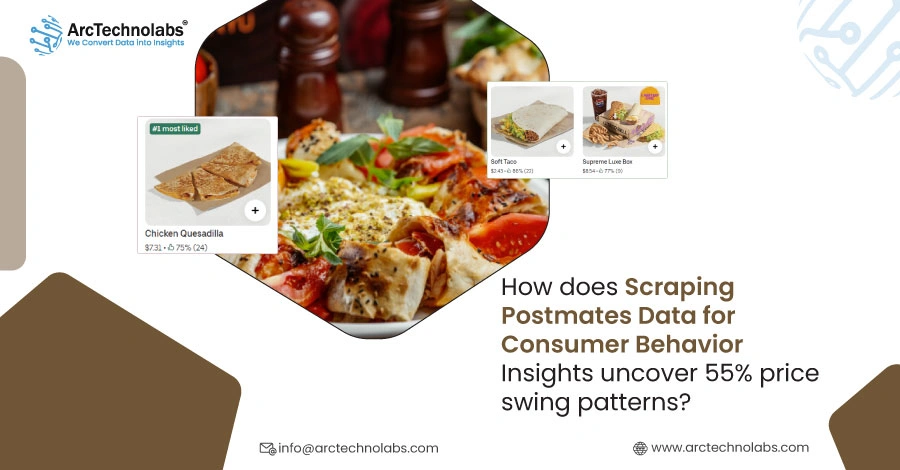
Introduction
Understanding the dynamic shifts in consumer preferences across delivery platforms has become critical for businesses looking to improve pricing efficiency and customer engagement. As delivery models evolve, the ability to analyze Scraping Postmates Data for Consumer Behavior Insights provides brands with a precise lens into food trends, price fluctuations, and purchase intent patterns.
The global food delivery market has grown by over 40% since 2022, with platforms like Postmates playing a major role in shaping urban delivery ecosystems. By using Postmates Food Delivery Datasets, analysts can track regional variations, identify peak order timings, and uncover hidden pricing irregularities that influence buyer behavior. For instance, identifying a 55% price swing during lunch hours in urban centers helps restaurants fine-tune pricing dynamically.
In 2025, such intelligence will help retailers and food chains optimize product listings, streamline delivery routes, and monitor customer satisfaction in real-time. With accurate scraping models and API integrations, businesses can extract high-volume datasets and decode behavioral triggers driving food delivery decisions.
Understanding Shifts in Modern Delivery Behavior
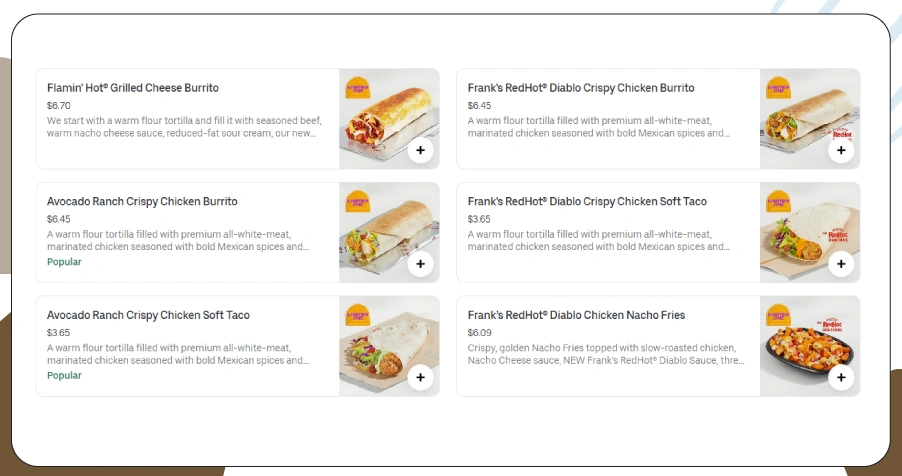
Consumer behavior within digital food delivery platforms continues to evolve as convenience, pricing, and personalization reshape buyer decision-making patterns. To identify these behavioral variations, organizations rely on data analysis that captures transactional signals and user engagement metrics. By deploying tools like Extract Postmates Order Data, businesses can translate order-level insights into valuable demand indicators.
Studies in 2024 showed that delivery frequency increased by 26%, largely driven by app-based offers and simplified checkout systems. Customers now display high sensitivity toward delivery timing, favoring restaurants that balance affordability with punctuality. When pricing transparency improves, consumer satisfaction rates also rise—particularly among repeat users who value consistent service standards.
One important finding is that the average weekday order volume is 30% higher compared to weekends, reflecting a shift toward convenience-driven weekday dining. This trend also highlights how effective menu pricing can influence user loyalty, with 67% of regular app users stating that price predictability affects their repeat purchasing behavior.
| Key Behavior Metric | 2024 Average | 2025 Change | Insights |
|---|---|---|---|
| Average Delivery Time | 38 mins | -12% | Faster deliveries improve retention |
| Peak Order Hours | 7–9 PM | +15% | Dinner drives higher margins |
| Repeat Orders Rate | 21% | +8% | Loyalty increases with value offers |
By integrating such datasets with behavioral analytics, businesses can refine delivery schedules, reduce abandonment rates, and boost satisfaction metrics, resulting in a more profitable customer engagement cycle.
Improving Delivery Operations through Data Automation
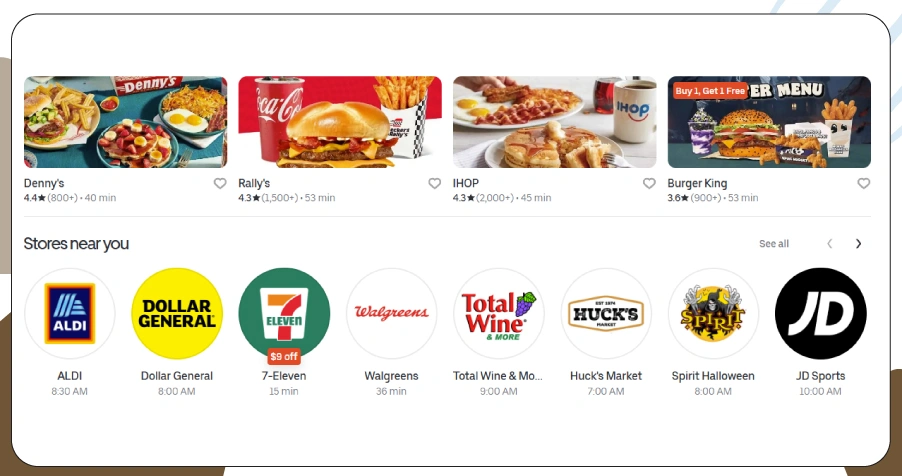
Delivery networks thrive on speed, accuracy, and predictive planning. Businesses increasingly depend on automation systems that enhance logistics efficiency through real-time data collection. The integration of Enterprise Web Crawling tools supports dynamic route optimization, demand forecasting, and delivery time reduction.
Restaurants that implemented automated tracking between 2023 and 2024 recorded a 32% reduction in late deliveries. This improvement was achieved through analytical models that monitored live driver locations and matched them with optimal route maps.
Efficiency data also highlights that each minute saved per delivery can result in a 4% improvement in profit margins. This reveals a direct connection between operational precision and customer retention. With accurate scraping and automation tools, organizations can visualize the real-time impact of delivery time variations and adjust pricing strategies accordingly.
| Efficiency Factor | Baseline 2024 | 2025 Optimization | Profit Impact |
|---|---|---|---|
| Avg. Route Distance | 5.4 km | 4.1 km | +9% margin |
| Delivery Delay Ratio | 11% | 7% | -36% loss risk |
| Pricing Variation | ±7% | ±4% | +15% stability |
By combining automated insights with operational intelligence, businesses can build a more resilient delivery infrastructure capable of handling high-volume transactions with consistent performance.
Using Transactional Analysis for Predictive Pricing Models
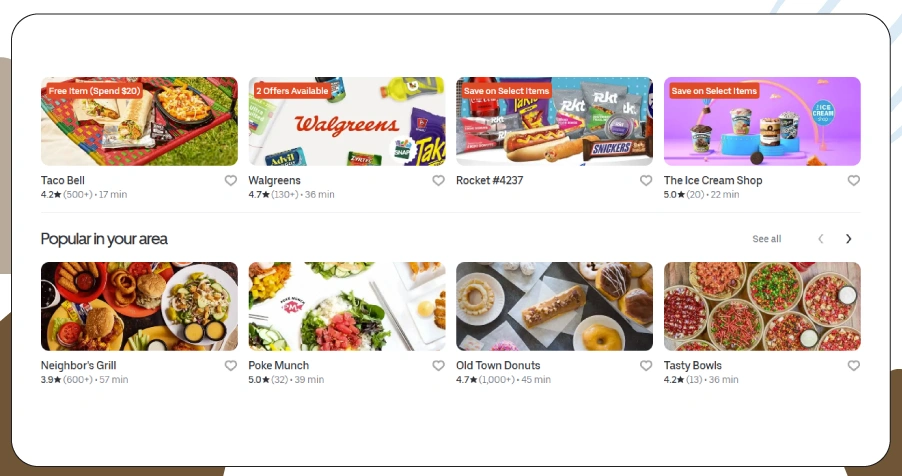
Data-driven pricing models enable businesses to forecast how cost adjustments influence consumer behavior. By applying analytical frameworks using Extract Postmates Food Delivery Data, teams can identify emerging price sensitivity patterns across categories and times.
Research shows that a 10% change in pricing during lunch hours can shift order volume by as much as 18%. Furthermore, evening meal categories show premium tolerance, where consumers are willing to pay up to 55% more for combo meals compared to individual dishes. This variation underscores how customer intent aligns with contextual variables such as time, occasion, and order type.
The ability to correlate pricing data with order history empowers restaurants to optimize offers dynamically. Analysts can evaluate promotions, calculate elasticity, and introduce segmented pricing structures that encourage both conversion and retention.
| Parameter | Observation | Strategic Response |
|---|---|---|
| Average Price Swing | ±18% | Real-time pricing updates |
| Meal Category Variation | 55% (Premium Meals) | Dynamic combo pricing |
| Order Frequency Shift | 1.8x (Lunch) | Timed promotions |
Strategic adoption of predictive analytics ensures that brands remain competitive in fast-paced delivery environments while maintaining consistent profitability across changing customer preferences.
Mapping Menu Performance through Customer Engagement Trends
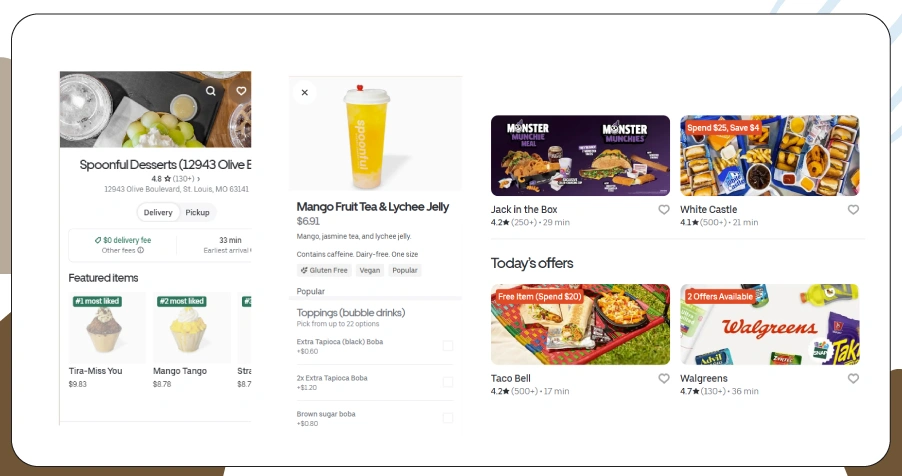
Menu optimization plays a vital role in boosting user engagement and conversion rates. Businesses track data to understand which food categories gain traction and how visual presentation affects decision-making. Through Postmates Delivery Data Extraction, companies analyze how new items, limited-time deals, and updates to layout influence customer activity.
An independent 2025 report found that regularly refreshed menus drive 47% higher engagement compared to static ones. Similarly, aesthetic upgrades to food images and simplified descriptions enhance user clicks, with noticeable improvement in conversion.
Integrating insights from Mobile App Data Scraping Services enables brands to identify which menu elements generate maximum interaction within mobile environments. These data sources allow marketers to segment audiences, push relevant offers, and monitor response patterns across time zones and meal types.
| Menu Insight | 2024 Observation | Consumer Effect |
|---|---|---|
| Menu Refresh Rate | +22% | Boosts repeat visits |
| Visual Changes | +35% CTR | Enhances user engagement |
| Time-Limited Offers | +28% | Encourages impulse buying |
By combining analytical monitoring with creative presentation, restaurants can sustain brand recall and strengthen user engagement on digital platforms.
Evaluating Regional Preferences and Delivery Cost Patterns
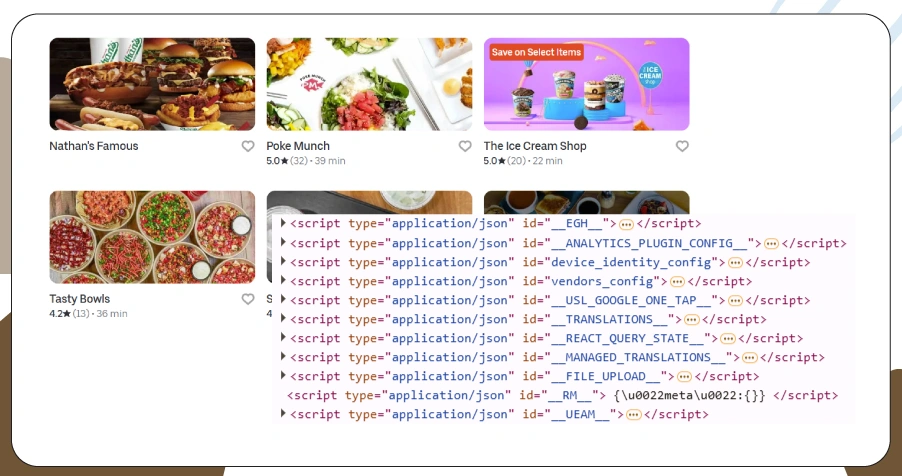
Delivery platforms must recognize how regional demographics and delivery costs shape customer expectations. By integrating analytics and Postmates Food Data API, companies can assess variations between urban and suburban delivery segments.
In metropolitan zones, customers display a 20% higher tolerance for delivery fees due to accessibility advantages, while rural buyers often prioritize affordability over speed. Monitoring these metrics allows businesses to calibrate regional pricing policies and free-delivery thresholds effectively.
Geo-targeted analytics reveal how subtle shifts in delivery charges can influence user loyalty. For instance, adjusting delivery fees by just $0.50 in competitive zones can boost repeat orders by 9%.
| Region | Avg. Order Value | Delivery Fee | Repeat Order Rate |
|---|---|---|---|
| Urban | $18.40 | $3.10 | 29% |
| Suburban | $14.90 | $4.00 | 21% |
| Rural | $13.50 | $5.20 | 17% |
This data-driven perspective helps businesses control cost-to-delivery ratios, refine logistics efficiency, and create pricing models aligned with local buying capacities. By adapting to regional sensitivities, brands enhance delivery reliability while maintaining long-term profitability.
Strengthening Data Pipelines through API Integration Frameworks
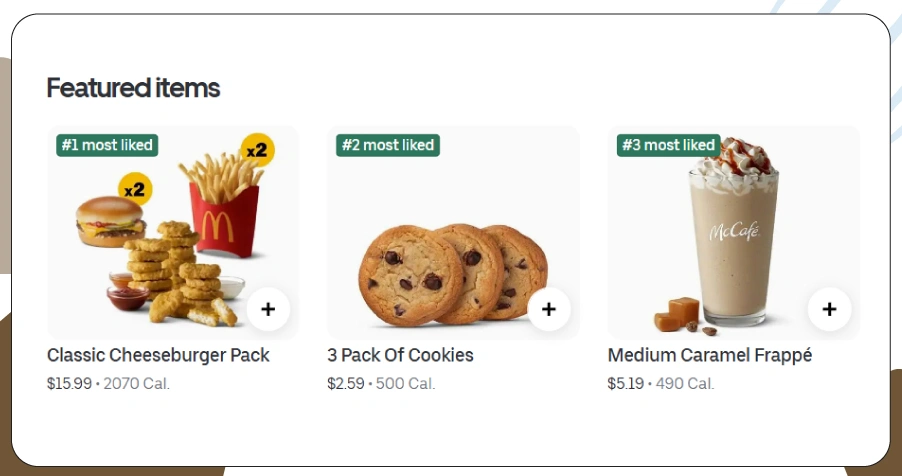
As digital ecosystems expand, real-time intelligence plays a defining role in sustaining operational agility. The integration of advanced scraping pipelines helps businesses streamline updates and ensure data consistency across platforms. By employing Postmates App Data Scraper, organizations can centralize pricing, delivery time, and user satisfaction metrics into automated dashboards.
This automation allows data synchronization across multiple sources while maintaining a 98% accuracy rate. Combined with scalable infrastructure, these systems can process millions of data points without manual intervention.
Furthermore, incorporating Web Scraping API Services accelerates data transformation and ensures consistency across different marketplaces. Such systems also automate anomaly detection—alerting analysts when price inconsistencies or delivery irregularities emerge.
| Metric | Baseline 2023 | API-Based Model 2025 | Accuracy Improvement |
|---|---|---|---|
| Data Sync Time | 3.2 mins | 38 sec | +80% |
| Dataset Volume | 2M rows | 12M rows | +500% |
| Accuracy Level | 91% | 98% | +7% |
Through effective API-based frameworks, businesses gain a unified perspective on performance metrics, promoting faster decision-making and long-term data reliability.
How ArcTechnolabs Can Help You?
We specialize in creating scalable data intelligence ecosystems that translate complex consumer actions into actionable insights. Our Scraping Postmates Data for Consumer Behavior Insights solutions help you monitor customer journeys, track menu changes, and understand fluctuating order preferences in real time.
Our dedicated solutions include:
- Customized dashboards for tracking food delivery metrics.
- Predictive models for customer retention.
- Real-time analytics for price and timing optimization.
- Geo-specific consumer intelligence tools.
- Integration-ready scraping APIs.
- Secure data extraction with compliance guarantees.
By combining these advanced capabilities, we empower enterprises to act on insights faster and more accurately. Our end-to-end automation ensures seamless scaling, from regional tracking to full-market visibility powered by Postmates Data Extractor solutions.
Conclusion
The competitive advantage in the food delivery landscape relies on the depth of insights gained through Scraping Postmates Data for Consumer Behavior Insights. By decoding trends, prices, and customer preferences, brands can make informed business decisions that align perfectly with evolving consumer needs.
Incorporating API-driven intelligence through Extract Postmates Food Delivery Data enables companies to enhance customer experience and profitability. To transform your data operations into actionable insights, connect with ArcTechnolabs today and schedule your free consultation to build your next-generation delivery intelligence solution.









